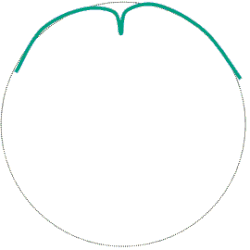
A three-turn is a figure skating element which involves both a change in direction and a change in edge. For example, when a skater executes a forward outside three-turn, the skater begins on a forward outside edge and finishes on a backwards inside edge. [1] There are eight three-turns in all; one for each possible combination of direction (forward or backward), skating foot (left or right), and edge (inside or outside). [2]